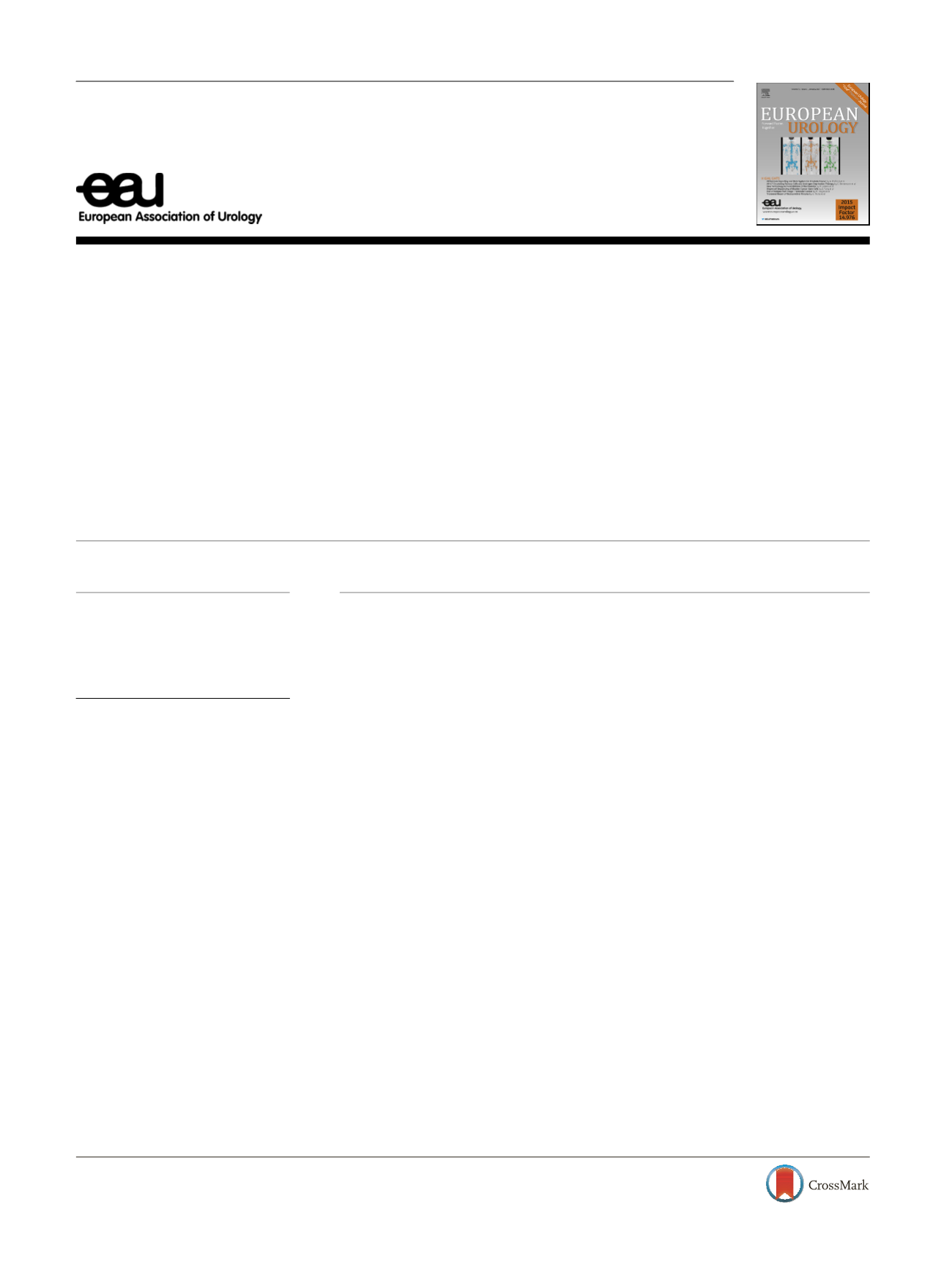

Brief Correspondence
Oncologic Outcomes for Patients with Residual Cancer at
Cystectomy Following Neoadjuvant Chemotherapy:
A Pathologic Stage-matched Analysis
Bimal Bhindi
a ,Igor Frank
a ,Ross J. Mason
a ,Robert F. Tarrell
b ,Prabin Thapa
b ,John C. Cheville
c ,Brian A. Costello
d ,Lance C. Pagliaro
d ,R. Jeffrey Karnes
a ,R. Houston Thompson
a ,Matthew K. Tollefson
a ,Stephen A. Boorjian
a , *a
Department of Urology, Mayo Clinic, Rochester, MN, USA;
b
Department of Biostatistics, Mayo Clinic, Rochester, MN, USA;
c
Department of Pathology, Mayo
Clinic, Rochester, MN, USA;
d
Department of Medical Oncology, Mayo Clinic, Rochester, MN, USA
E U R O P E A N U R O L O G Y 7 2 ( 2 0 1 7 ) 6 6 0 – 6 6 4available at
www.scienced irect.comjournal homepage:
www.europeanurology.comArticle info
Article history:
Accepted May 5, 2017
Associate Editor:
Giacomo Novara
Keywords:
Cystectomy
Urinary bladder neoplasms
Neoadjuvant therapy
Antineoplastic agents
Cisplatin
Abstract
While it has been demonstrated that receipt of neoadjuvant chemotherapy (NAC) before
radical cystectomy (RC) improves survival compared to RC alone, the driving factor for
this benefit may be from patients with ypT0 status at surgery. Meanwhile, the implica-
tions of having residual urothelial carcinoma of the bladder (rUCB) at RC after NAC are
less clear. We therefore evaluated whether survival differed between patients with rUCB
at RC after NAC and stage-matched controls who underwent RC alone. Patients who
underwent NAC + RC (
n
= 180) were matched to controls who underwent RC alone
(
n
= 324) on the basis of pT and pN stage, margin status, and year of RC. The 5-yr
recurrence-free survival (RFS; 90% vs 94%;
p
= 1), cancer-specific survival (CSS; 82% vs
93%;
p
= 0.4), and overall survival (OS; 82% vs 82%;
p
= 0.5) were not significantly
different between the NAC and control groups for patients with ypT0N0/pT0N0 disease
(
n
= 103). Conversely, among patients with rUCB at RC (
n
= 401), patients who received
NAC had significantly worse 5-yr RFS (50% vs 63%;
p
= 0.01), CSS (40% vs 59%;
p
= 0.003),
and OS (33% vs 48%;
p
= 0.02). On multivariable analysis for patients with rUCB, NAC
receipt remained independently associated with worse RFS (hazard ratio [HR] 1.84, 95%
confidence interval [CI] 1.28–2.66;
p
= 0.001), CSS (HR 1.81, 95% CI 1.30–2.52;
p
<
0.001),
and OS (HR 1.57, 95% CI 1.18–2.08;
p
= 0.002). Limitations include potential for selection
bias owing to the retrospective observational design. Thus, while patients who achieve a
complete response to NAC have excellent survival outcomes, those with rUCB after NAC
have a worse prognosis compared to stage-matched controls undergoing RC alone. It
may be worthwhile considering these patients for clinical trials evaluating the role of
additional treatments after RC using newer agents while we await further research on
predicting which patients achieve ypT0 status from NAC before RC.
Patient summary:
On surgical removal of the bladder, patients without residual bladder
cancer after neoadjuvant chemotherapy have excellent survival outcomes. However,
patients with residual cancer after neoadjuvant chemotherapy and surgery have worse
outcomes compared to patients undergoing surgery alone. These patients should
therefore be considered for additional treatments after surgery using newer agents
while we await further research on predicting which patients will benefit from neoad-
juvant chemotherapy before bladder removal for cancer.
#
2017 European Association of Urology. Published by Elsevier B.V. All rights reserved.
* Corresponding author. Department of Urology, Mayo Clinic, 200 1st Street SW, Rochester, MN
55905, USA. Tel. +1 507 2844015.
E-mail address:
boorjian.stephen@mayo.edu(S.A. Boorjian).
http://dx.doi.org/10.1016/j.eururo.2017.05.0160302-2838/
#
2017 European Association of Urology. Published by Elsevier B.V. All rights reserved.
















